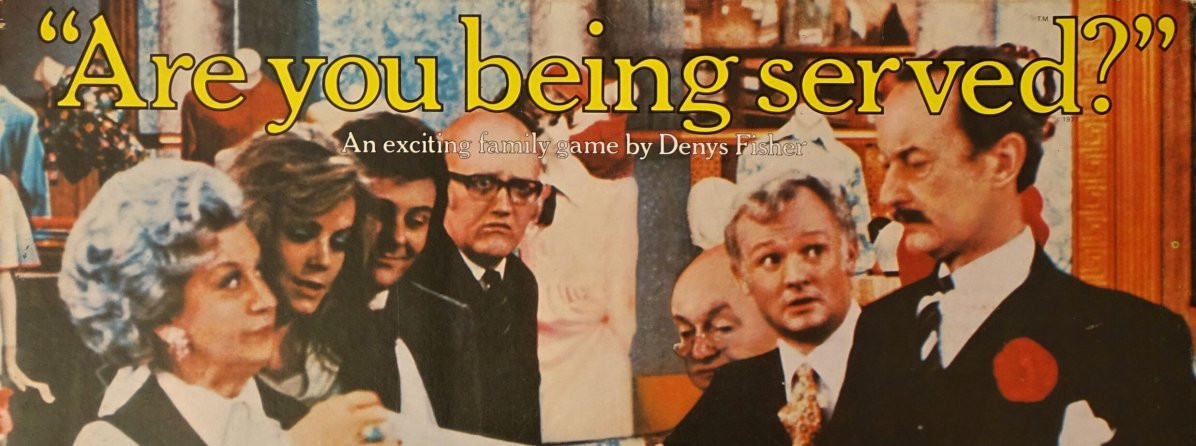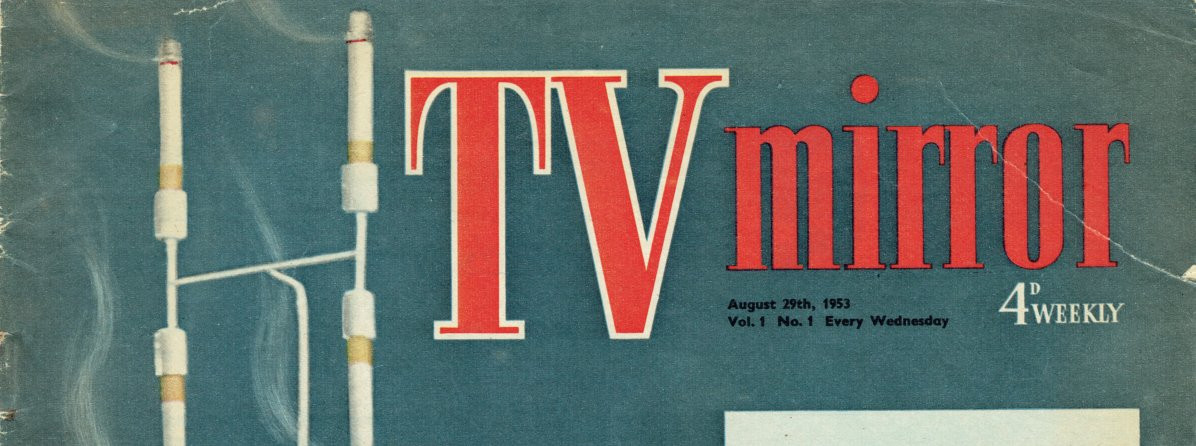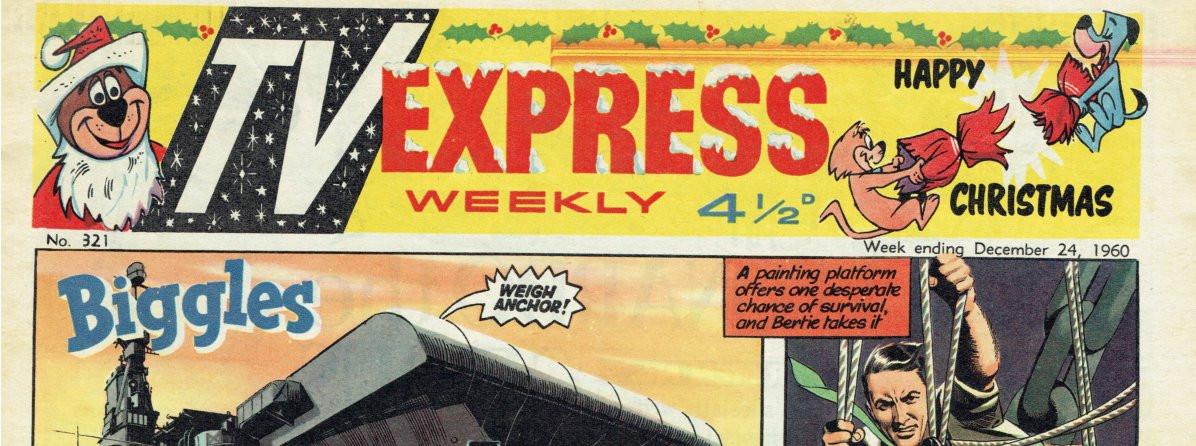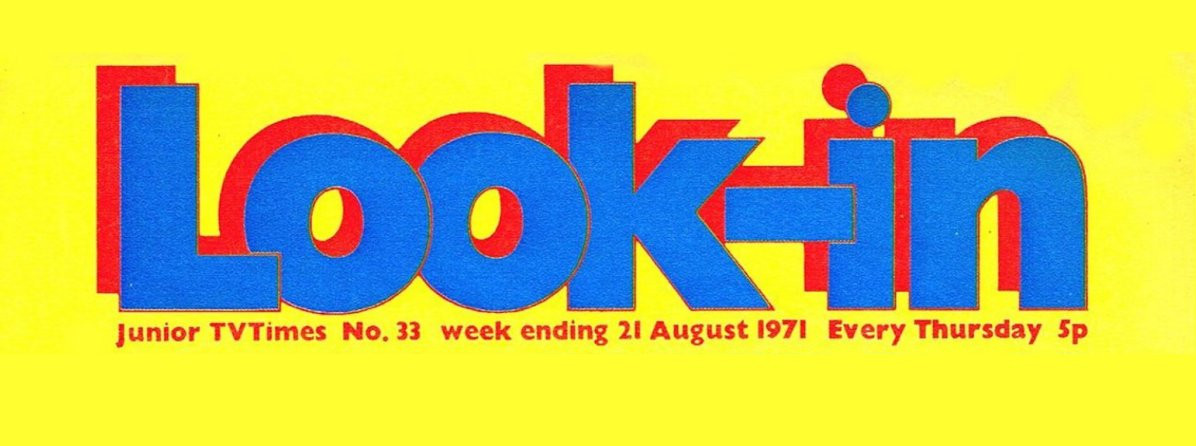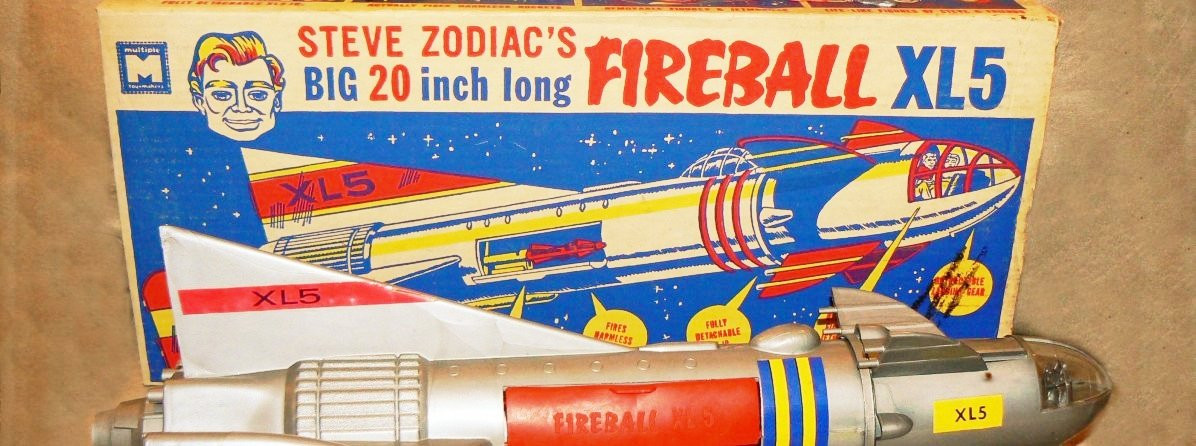
TV Tie-Ins: Disney to Daleks and Beyond Part 3
In March 1965 Corgi Toys introduced the first of many television tie-in models that would make the company famous
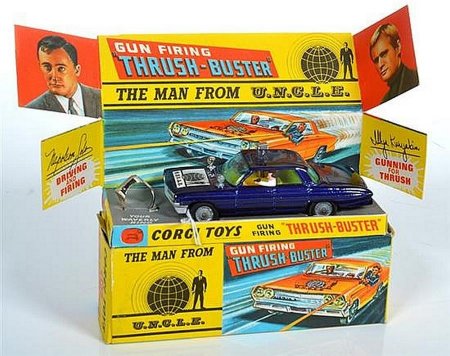
Designed by BBC employee Ray Cusick, the Daleks proved to be equally popular with children and adults alike. When in 1964 the first Dalek toys went on sale, they became so popular that literally hundreds of by-products were launched. The first were battery-operated, friction drive and 'Rolykins' Daleks from Louis Marx & Co., and these were quickly followed by small inexpensive (pocket-money) plastic toys from Cherilea Toys of Burnley and Herts Plastic Moulders Ltd which were sold loose from retailers such as Woolworths.
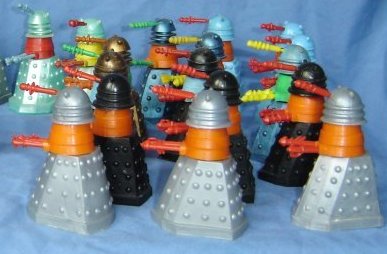
Cowan de Groot Ltd produced a number of different Daleks such as money boxes and wind-up toys as well as a board game called 'Dr Who...Dodge the Daleks.' The game contained an illustrated playing board, a dice, a small plastic cup and four standard plastic pieces for moving round the board. These weren't even shaped like Daleks which may well have improved the quality of the product (although only minimally). The best thing about this game is the illustration on the box. The item is quite rare now and one was sold recently for nearly £400.
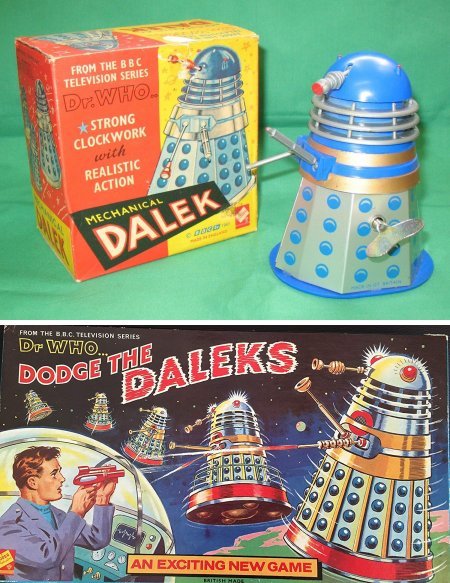
There were also Doctor Who and Dalek annuals, Dalek badges, a slide projector and, in what clearly illustrated that quality didn't always take precedence over mass-production, two notoriously poor plastic products. The first was the 'Cutta-mastic featuring Daleks,' which contained crude polystyrene tiles on which illustrations of Daleks were printed. The box also included a small battery-operated hotwire gun which was employed to cut around the Daleks.
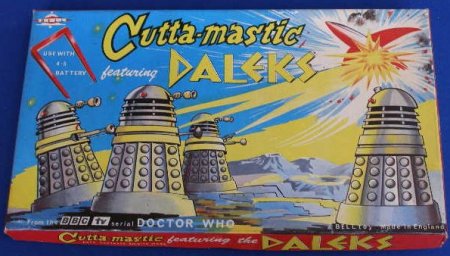
The second was a bargain-basement playsuit by Berwick Toys. The playsuit was made up of a red and white vinyl skirt which went over the head with shoulder straps for the body. A plastic dome was worn on the head which was supported by a cardboard visor (no, really) that had slots cut out so the wearer could see where they were going. Weapons (a suction cup and a gun which were attached to the end of two painted wooden sticks) were held through holes in the body.
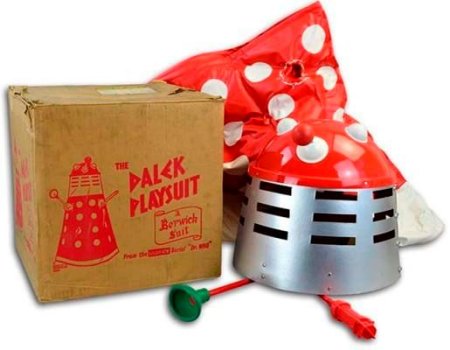
Infinitely better was the 'Dalek Playsuit' by Scorpion Automotive which was released to cash in on the 1964 Christmas market. However, a factory fire in April 1965 destroyed all their stock and the parts required to manufacture additional suits and as a result, when Dalekmania hit the high street toy shops in 1965 they were unable to take advantage of it. As such, the Scorpion playsuit, which came in a TARDIS style box, remains to this day one of the most sought-after TV tie-in toys by collectors.
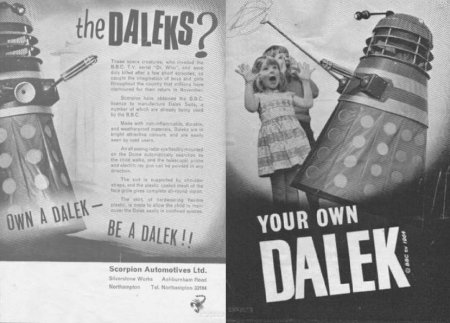
In March 1965 Corgi Toys introduced the first of many television tie-in models that would make the company famous. The Corgi brand was created by the Mettoy Company of Northampton which first started to produce colourful, pressed metal toys in the 1930s. They began creating a range of toy vehicles in direct competition to Meccano's Dinky Toys which had dominated the British market for years and in the 1950s began producing them in cast metal. By 1956 they were releasing models of familiar British vehicles and these were released on a monthly basis. Corgi were the first toy car manufacturer to make a vehicle with opening features (their Aston Martin DB4 released in 1960 had an opening bonnet) and soon added other extras such as steerable front wheels, jewelled headlights and rear lights. In 1965 Corgi released its first TV tie-in model, 'The Saint's Volvo 1800' sports painted in white with the Saint logo on the bonnet. In October 1965 Corgi released their first movie tie-in toy, 'James Bond's Aston Martin DB5' from the film Goldfinger and it was this toy alone that turned Corgi into a market leader. The car featured machine guns at the front, an ejector seat and a bullet-proof rear screen which popped out at the touch of buttons placed along the side of the vehicle. By Christmas 1965 demand for the toy was so high that Corgi were struggling to keep up with it. There followed a plethora of Corgi TV tie-ins throughout the 1960s such as 'The Man from U.N.C.L.E. Thrushbuster,' the 'Batmobile' and the 'Green Hornet's Black Beauty,' all of which had similar features to the Aston Martin. TV tie-ins with non-moving parts as previously described proved no less popular with vehicles being produced for The Avengers, Daktari, The Monkees and The Prisoner to name just a few.
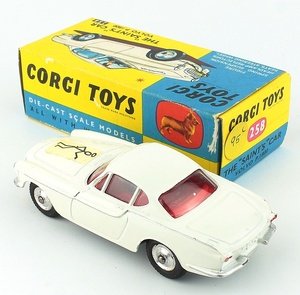
Gerry Anderson products continued to dominate the toy shelves and AP Merchandising was now in full swing. 1964's Stingray series produced a number of toys and products. Among them was a Lyons iced-lolly called 'Sea Jet.' AP Films even went so far as shooting sequences for the TV ad campaign. But one of the biggest merchandising successes for AP was the launch, on Wednesday 23 January 1965, of a weekly colour comic called TV Century 21. Selling for 7d which was slightly higher than the average children's comic then available; 'TV21' (it later dropped the 'Century' part of the title) was, like all of Anderson's puppet series, far superior to that of its competitors. Printed on high quality smooth paper (as opposed to the newsprint type) it also included a number of other TV shows that were popular with youngsters, such as My Favourite Martian, Get Smart!, Burke's Law, The Munsters and, in something of a coup for the comic, The Daleks (but not Doctor Who). The comic proved such a big hit that a year later, 'Lady Penelope,' aimed specifically at girls, was added to AP's catalogue and between them the two comics combined circulation totalled 1,300,000 copies a week, a phenomenal total that has not been bettered by any British comic to this day.
Encouraged by the popularity of the comics, Gerry Anderson instigated Century 21 Records in association with Pye Records to produce a series of 21-minute EP's featuring abridged versions of the TV episodes of his shows, usually narrated by one of the principle characters.
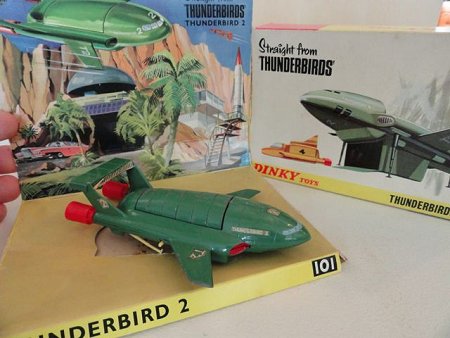
Anderson's 1965 series, Thunderbirds, proved to be the most successful. The programme, about an organisation called International Rescue, that would attend the scenes of life-threatening disasters using high tech machines and equipment to save the day, was a toy manufacturers dream. Anderson's own toy making company 'Century 21 Toys' bought out large scale models of all the Thunderbird vehicles and licence was granted to Dinky to produce die-cast models. Thunderbirds proved so successful that it seems to be rediscovered with every new generation of children and as a result TV tie-in toys related to the series are still being produced today.
By the mid-1960s TV tie-in toys and merchandise dominated the market and has, to this day, a huge influence on programme makers. Perhaps more so in modern times than any other. When the BBC relaunched Doctor Who in 2005 one of the most important aspects of reviving the series was the licensing deals. Author Frank Collins wrote: 'The BBC had also started issuing licenses to merchandisers with the tip of the iceberg represented by 'Character Options' producing their range of action figures and toys to accompany the show. Their toys and action figures would go on to win numerous awards including 'Electronic Toy of the Year 2005' (the radio-controlled Dalek), 'Toy Of The Year 2006' (Cyberman voice-changer helmet) and the 'Boys Collectable Toy of the Year 2007' (action figure range), from the Toy Retailers Association.' Even with a diminishing UK audience, Doctor Who, from a merchandising angle, is arguably too valuable a commodity for the BBC to stop making it.
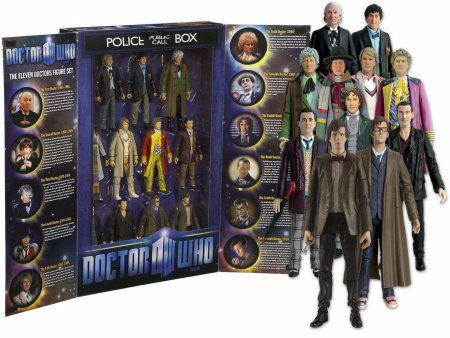
Andrew Carley, the head of licensing at 'Entertainment One,' told The Guardian newspaper in 2010 "Licensing is a very significant part of television as a whole. When we're looking at new shows, it can be difficult to work out how to finance them if there's not the licensing component because there's so little money from the broadcasters." The Guardian noted that 'DVDs, books and, above all, toys can ensure a programme's future with a TV brand licensing industry that is worth £146bn.' Carley told The Guardian: "The licensing can almost be the crux of justifying new episodes. It can justify a new series. You could argue that that's slightly worrying. But it's the reality of the market. In the short term I don't see anything changing. I see the reliance on licensing growing as advertising revenue falls." With its roots set firmly in the 1950s, the TV tie-in is a more vital part of 21st century programme making as it ever was.
Article: Laurence Marcus (April 2019)
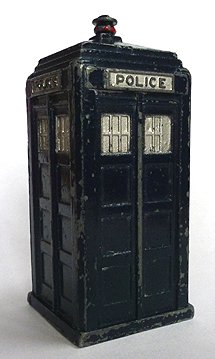
Dinky's Police Box
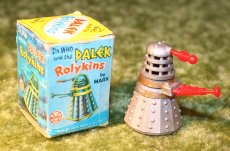
Rolykin's Dalek
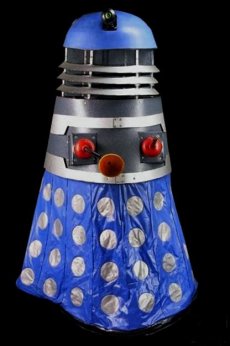
Dalek Playsuit
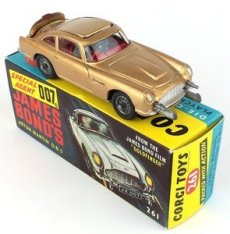
Corgi Toys' James Bond's Aston Martin
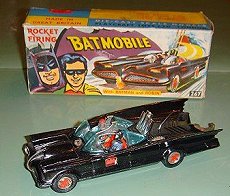
Corgi's Batmobile
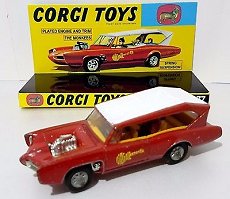
Corgi's Monkeemobile
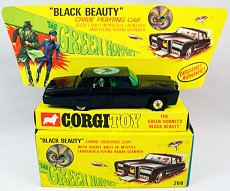
Corgi's Black Beauty
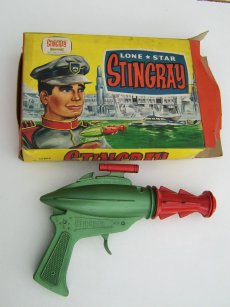
A 1960s Stingray toy gun
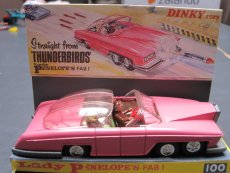
Dinky's FABulous FAB 1
